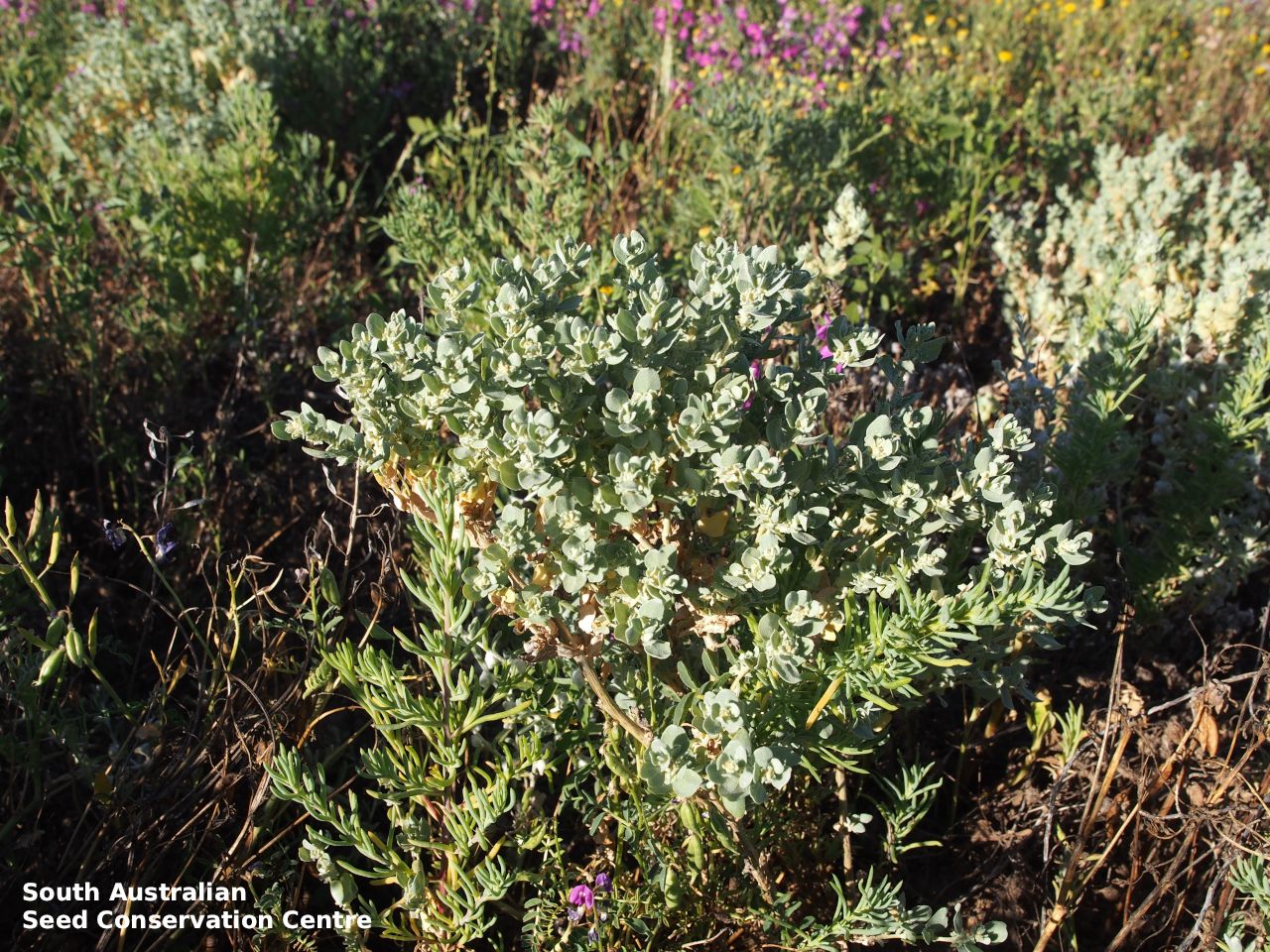
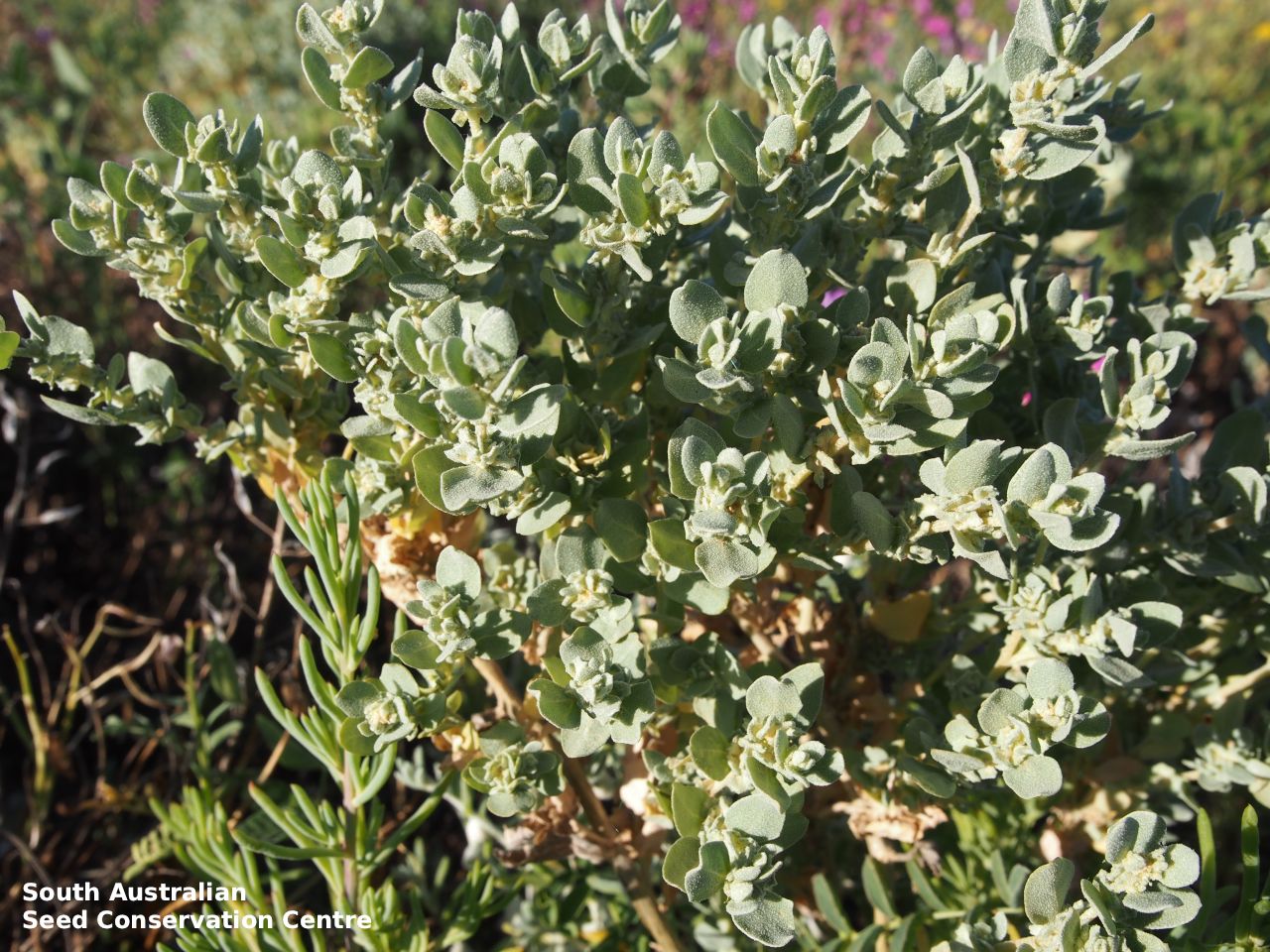
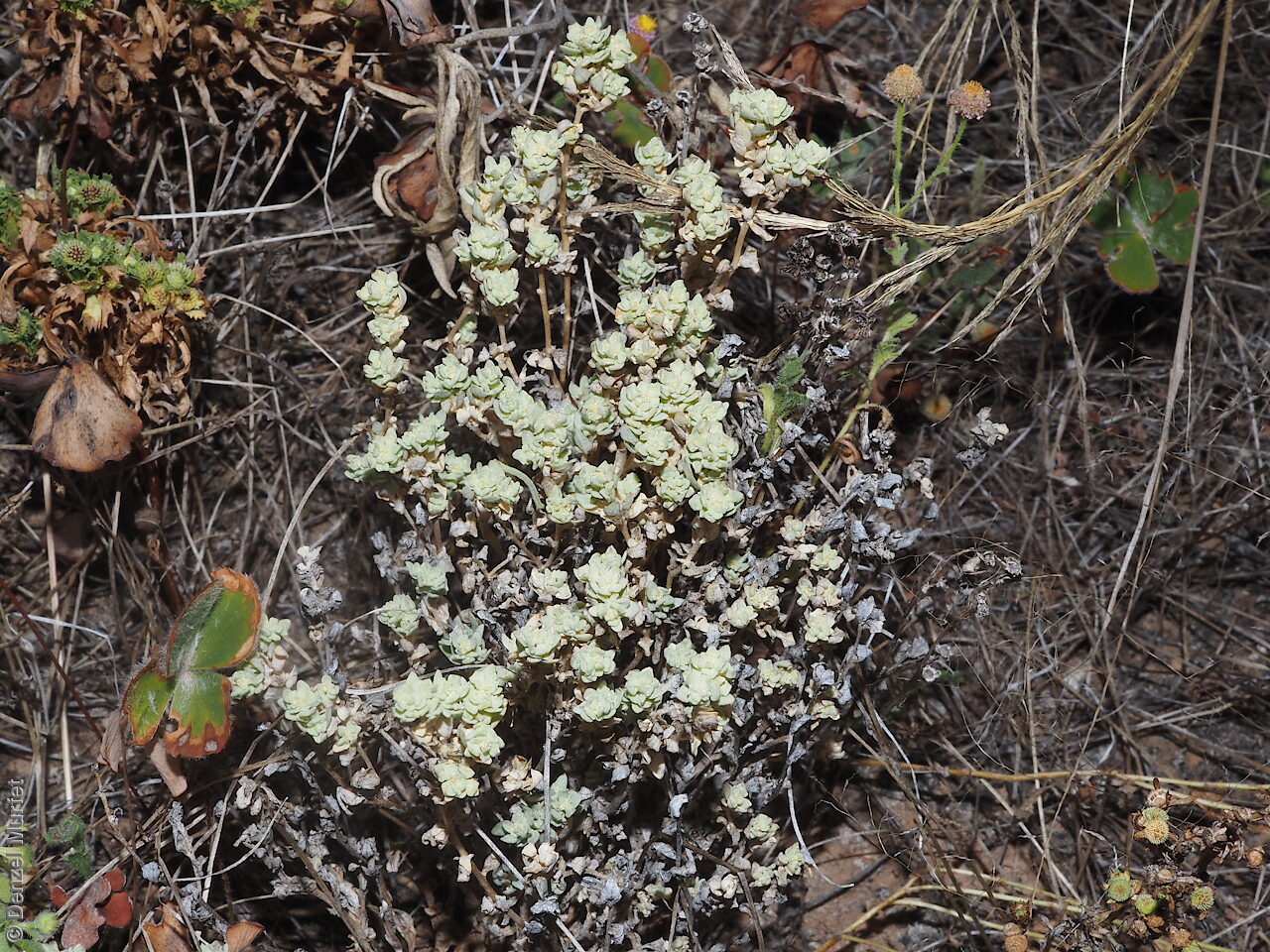
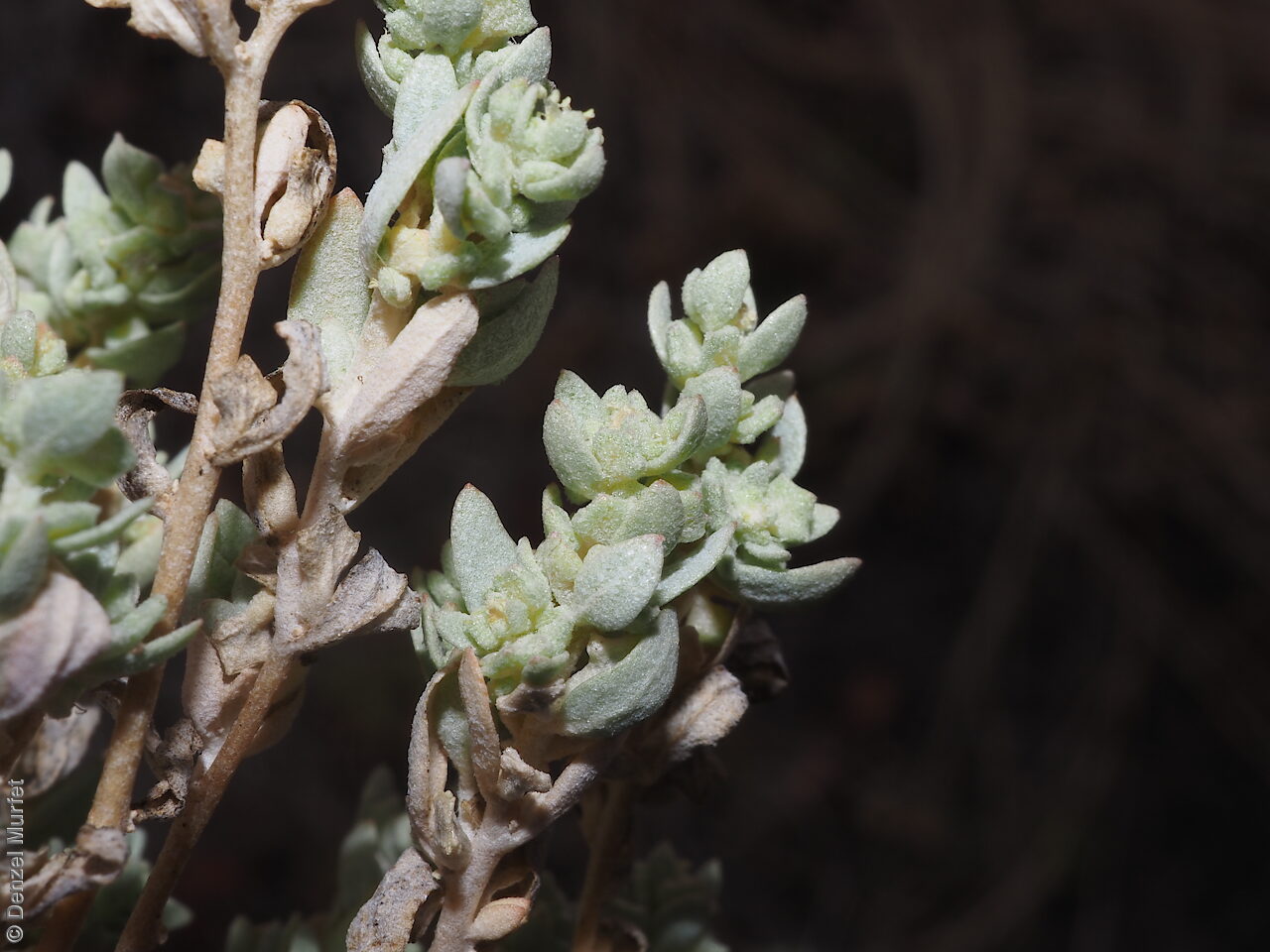
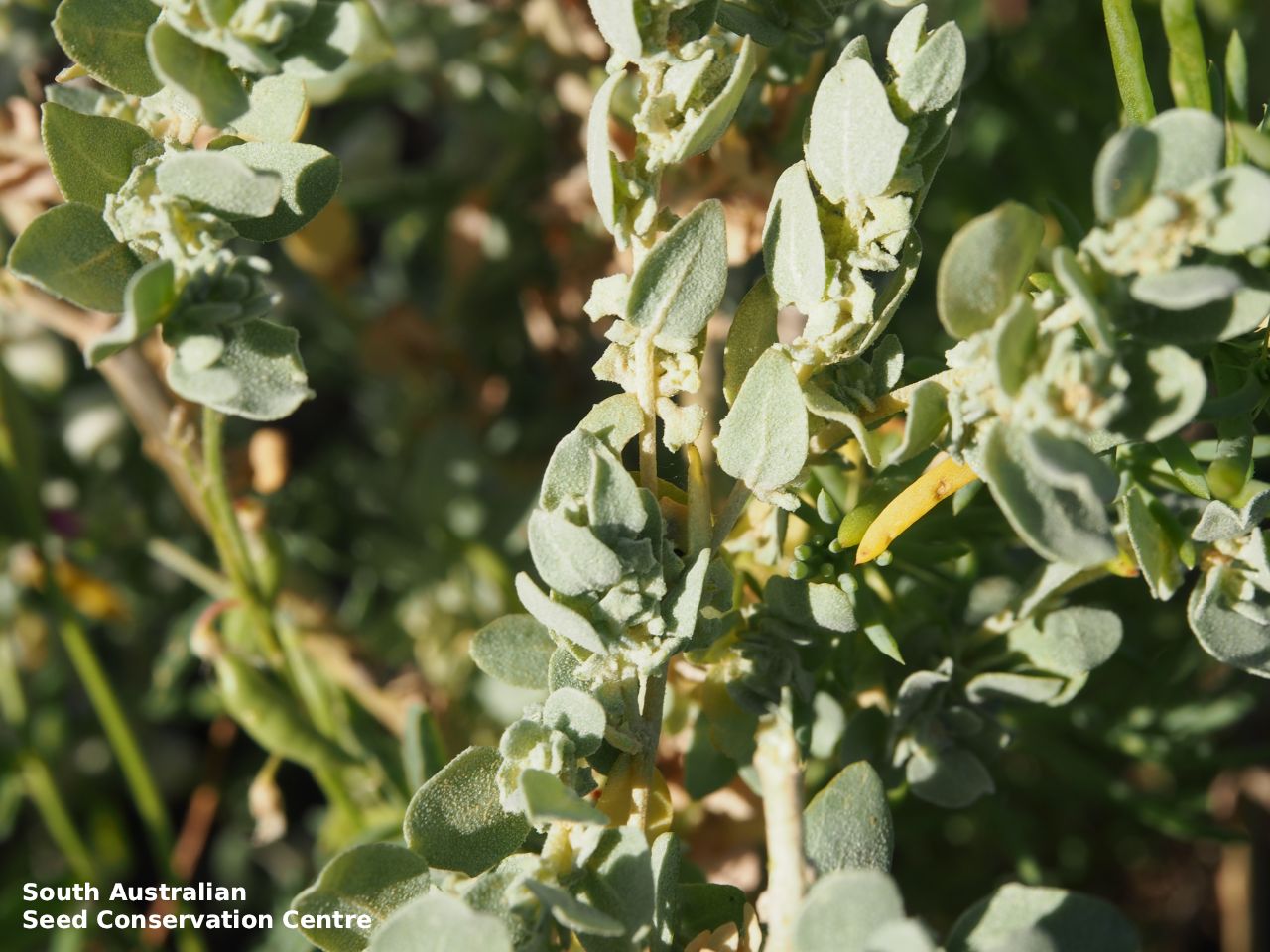
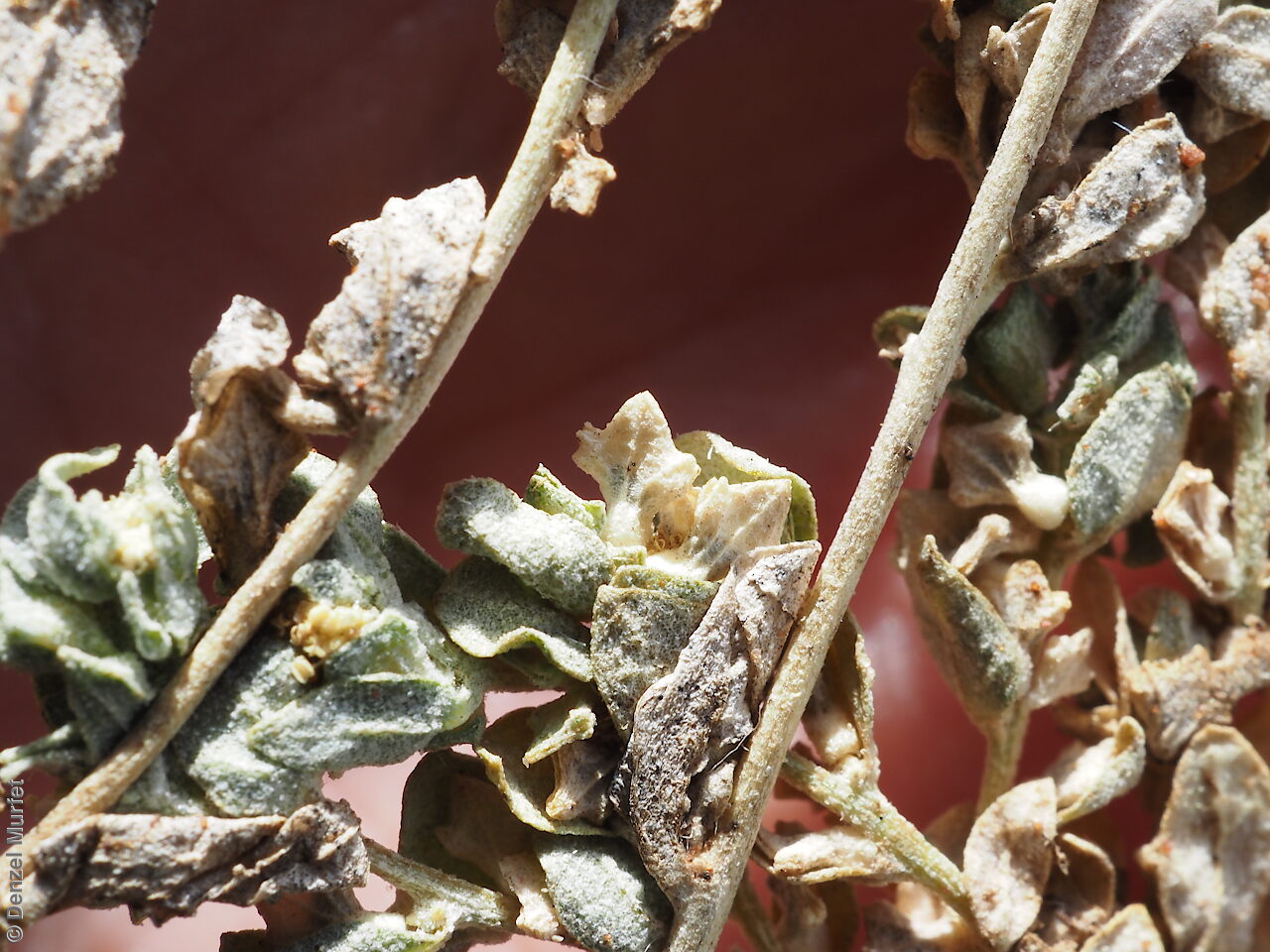
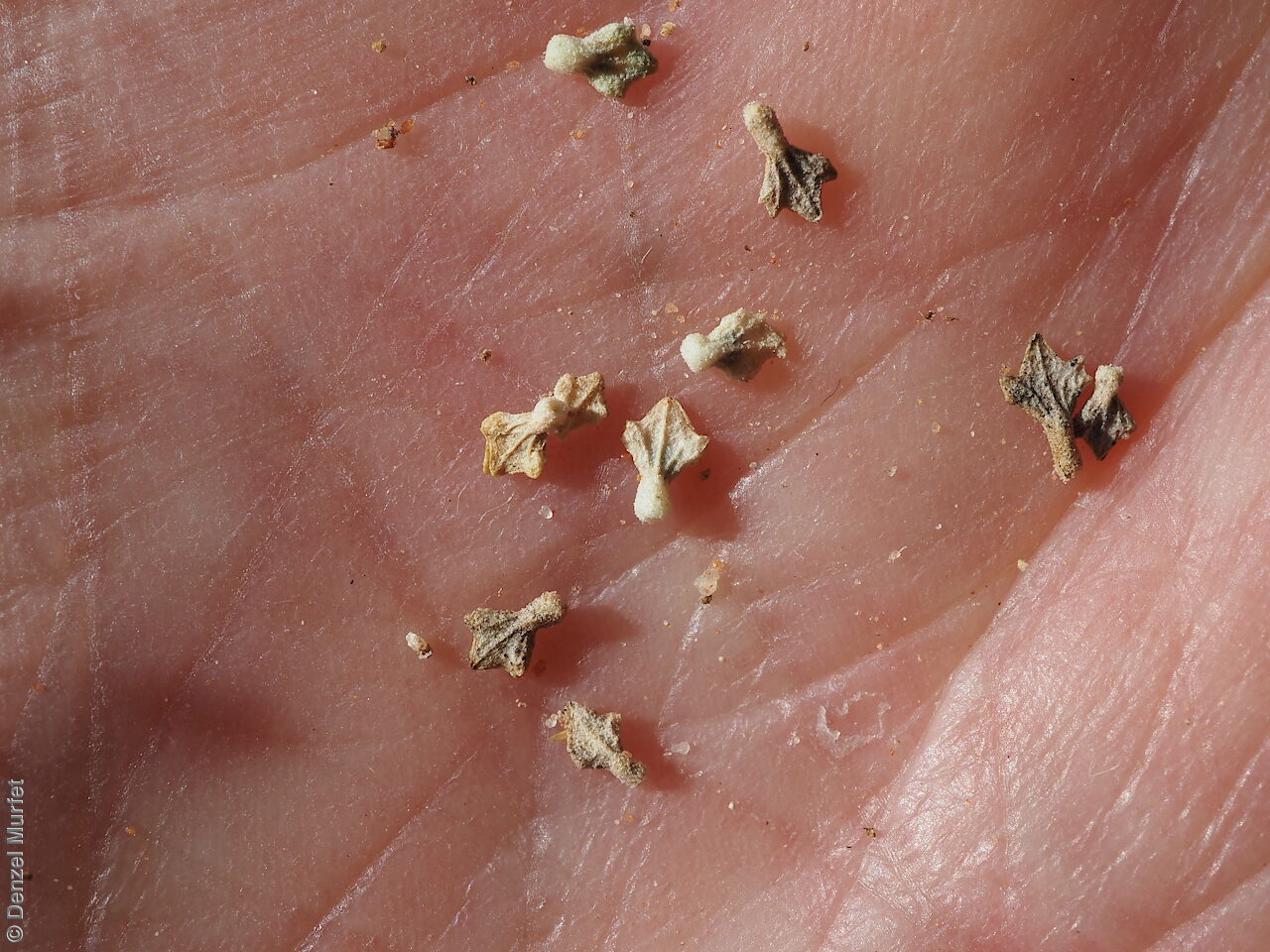
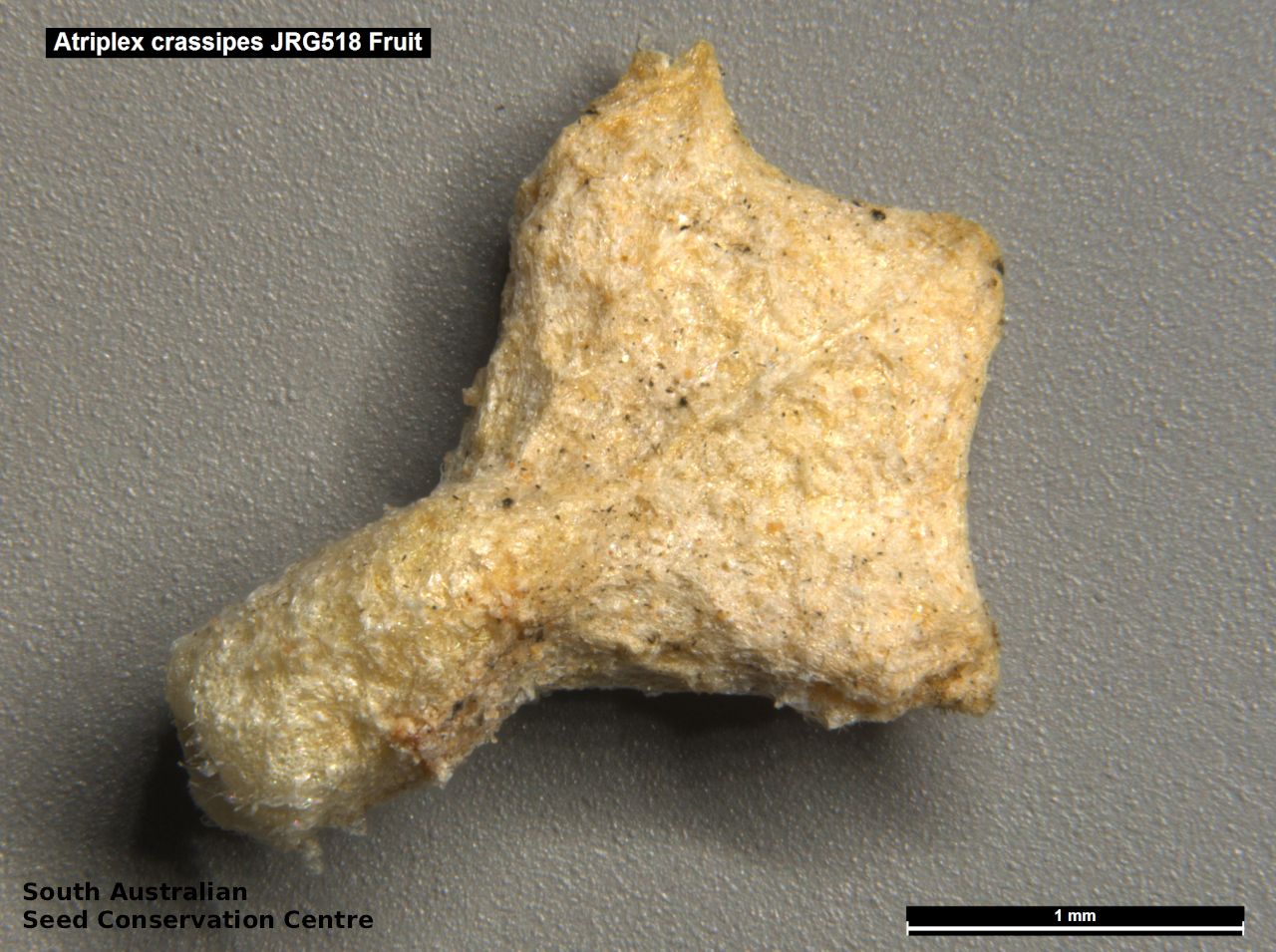
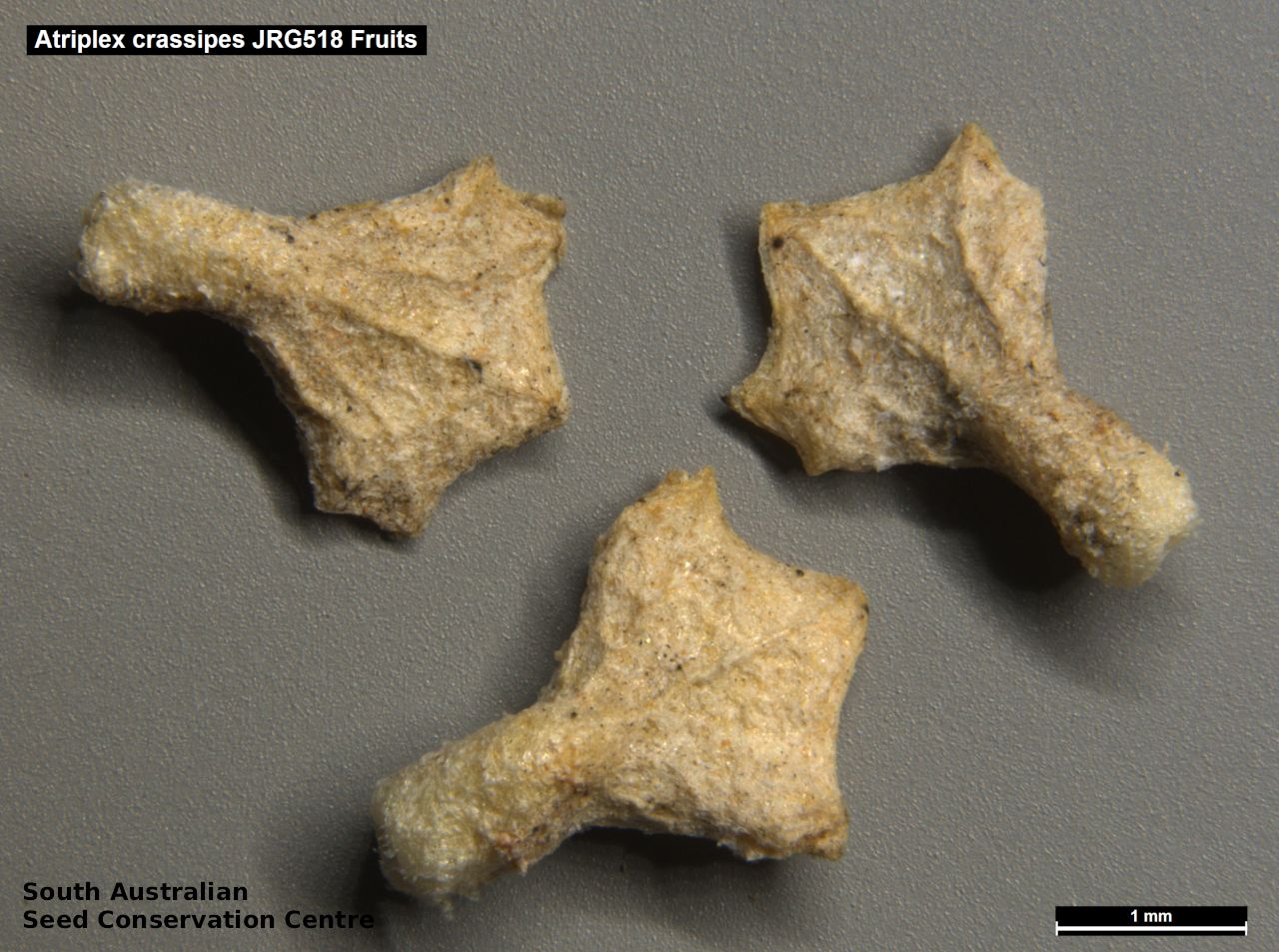

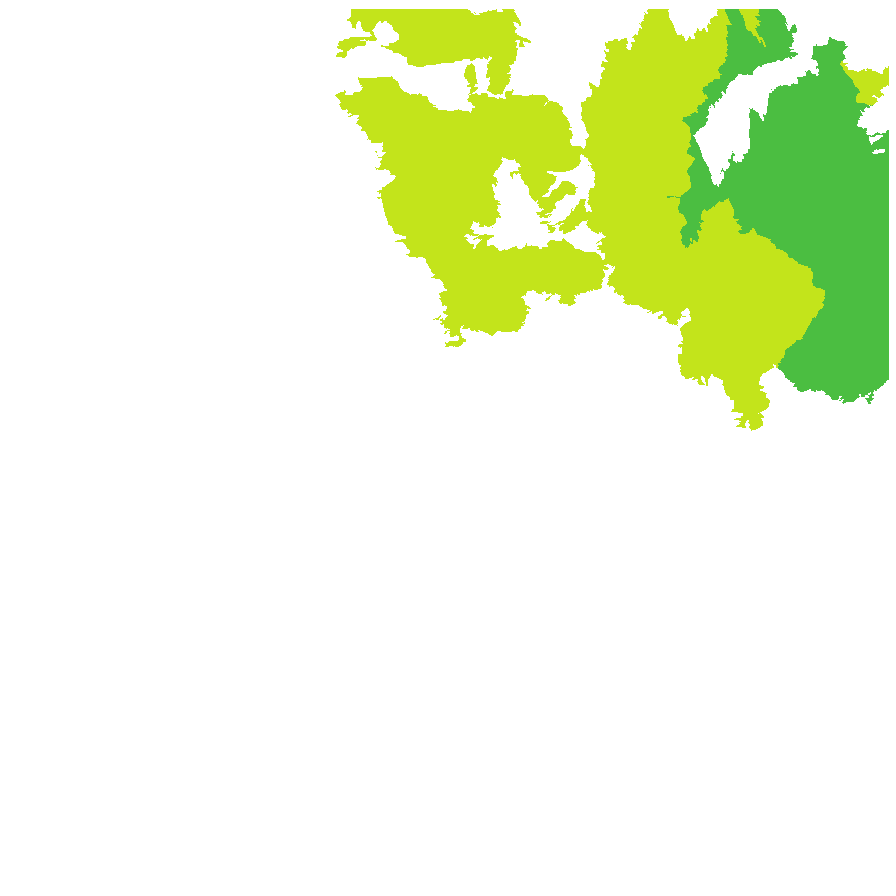
Botanical art
Prior names
Atriplex rosea var. stipitata
Atriplex muelleri var. stipitata
Atriplex crassipes var. inappendiculata
Etymology
Atriplex from the Latin 'atriplexum' meaning an orach, a saltbush, an Ancient Latin name for this plant. Crassipes from the Latin 'crrassus' meaning fat and 'pes' meaning foot; referring to the base of the fruit which is round and thick like a foot.
Distribution and status
Found scattered in the arid north and north-east of South Australia. Also found in Northern Territory, Queensland and New South Wales. Native. Common in South Australia. Common in the other states.
Herbarium region: Lake Eyre
NRM region: South Australian Arid Lands
AVH map: SA distribution map (external link)
Plant description
Decumbent to erect rounded herb to 30 cm high with sessile or shortly petiolate leaves, scurfy-tomentose on both surfaces, ovate to elliptic, to 15 mm long, thin, obtuse, entire, cuneate to truncate at the base. Flowers in axillary glomerules. Flowers throughout the year. Fruits are pale brown fruit like a duck's foot to 4 mm long, with a tube base and a flattened, shortly 3-toothed apex with prominently nerved. Seeds are dark brown, globular reniform seed to 1 mm long and wide. Seed embryo type is peripheral.
Seed collection and propagation
Collect seeds between January and December. Collect fruits that are starting to turn pale brown, drying off and papery. Fruits can be collected directly from the bush or from the ground underneath Place the fruits in a tray and leave to dry for one to two weeks. No cleaning is required if only the fruits are collected. The seed can be stored in the fruit or can be clean further. Rub the fruit gently by hand to dislodge the seeds. Use a sieve to separate the unwanted material. Store the seeds with a desiccant such as dried silica beads or dry rice, in an air tight container in a cool and dry place.